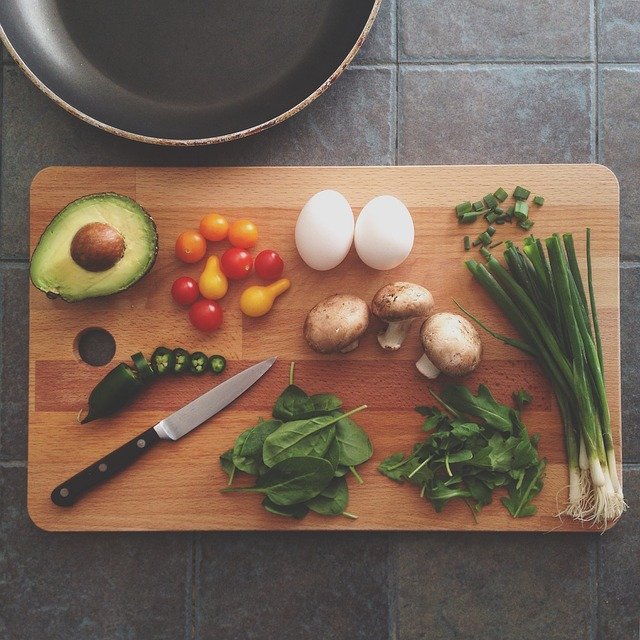The paleo and keto diet are two of the most popular diets going right now. What is special about them is that they feel like they have some staying power; they should be around for longer than most fad diets.
The reason for that is because they are based in some very good ideas about what is optimal for the human body.
I have long been interested and curious about these two diets, even adapting my own to be closer to both of them. But I never fully understood the differences between them since they have a lot in common.
Let’s take a look at what these diets actually are about and how they differ.
The Paleo Diet
The paleo diet is modeled after the Paleolithic era, trying to closely mimic what humans would’ve been eating about 2.5 million years ago.
The reason for aiming for a period that was so long ago is based on the idea that since then, our bodies, and guts in particular, have not changed very much since then.
Modern times have accelerated incredibly quickly at a rate our bodies can’t even try to keep up with. So we’re basically trying to install brand new software onto ancient hardware; a tough ask. This is where the diet comes in.
The whole diet is based on whole, unprocessed foods that could’ve been found in the wild. We’re talking about fresh meats, seafood, eggs, vegetables, fruits, nuts, seeds, and some oils and fats.
Grains are not an option because humans hadn’t learned how to grow crops yet during this period. Anything processed or containing added sugars is out as this would’ve also been impossible for the time.
Dairy is also not an option although some modern day paleo followers would say otherwise. Humans were technically not taking any animal’s milk to create dairy products yet.
The diet is quite a fascinating concept to me. It makes you realize how much our diet has changed as modern day people.
The Keto Diet
The keto diet is different because it’s not about a time period, it’s about optimizing your metabolism.
The diet is trying to get you into a state of ketosis, where the body is only burning fats as an energy source rather than glucose from carbs and sugar (what modern diets do). This means you would be consuming lots of (hopefully healthy) fats every day.
Keto is designed to protect you from getting hungry all the time because it avoids the threat of your insulin spiking and dropping throughout the day with the consumption of sugar.
The keto diet is focused on the amounts of each macronutrient you can eat so practitioners will have to intentionally limit their intake of carbs to remain in ketosis.
It also works incredibly well with fasting, by design. It’s very easy to eat large, satiating, and nutritious ketogenic meals and not have to think about food for a long time. Some people are able to pull off eating one meal a day (omad) without trouble.
So that summarizes each diet, now what are the differences between them?
Paleo does not allow dairy while keto does. Paleo says no because humans did not consume animal milk at that point in time, whereas keto sees dairy as a good opportunity to get some more fats in with a variety of nutrients.
Paleo does not allow grains, keto sort of does. Clean keto, as Thomas DeLauer would call it, probably wouldn’t allow grains because they’re too carb heavy and nutritionally weak. He is an extreme case though as most keto people are not as strict as him.
Paleo does not allow for any processing, keto does. This has got to be the best pitch for paleo as an unquestionably healthy diet for anyone. No processing is always good, no matter who you are. You really can’t beat paleo here.
Not to mention, keto can get pretty sloppy with some of the foods that are still considered “clean” even though they contain a long list of ingredients that were specially harvested and packed together to make a snack that people on the diet will find palatable. Point being, it can start to feel too artificial.
Paleo allows for natural sugars, like fruit and honey, whereas keto doesn’t for the most part. It’s not that you can’t eat fruit or honey on keto, but they are so carb and sugar heavy that you would barely be able to consume any. Maybe that would still be worth it to you, it varies for people.
Speaking of sweeteners, keto is known for diving deep into the world of sugar alcohols, things like: stevia, monk fruit, erythritol, allulose, etc. These are options that paleo would never allow because they are technically all processed foods.
So what’s the final verdict?
Keto has been known to be excellent for weight loss / fat loss. The fact that carbs and sugar are so limited means you won’t have it all being stored as fat quickly after eating it.
Also, carbs hold onto water in the body quite well, so bloating and holding excess water weight can become an issue with too many carbs.
If you have bad cravings and addictions to things like sugar (that’s me), keto might be a great option for you. You would be forced to cut that stuff out cold turkey and develop the taste for fats once acclimated with the diet. I have personally noticed this myself from some experimentation.
Keto also appears to be good for athletes as the diet keeps energy levels and potential for expenditure very stable.
On the other hand, paleo appears to be a great option for anyone looking for the general healthy lifestyle diet. It’s not always easy to find a paleo meal, but the concepts are hard to beat. You really can’t get any healthier than whole foods that are completely natural and unprocessed.


Leave a Reply